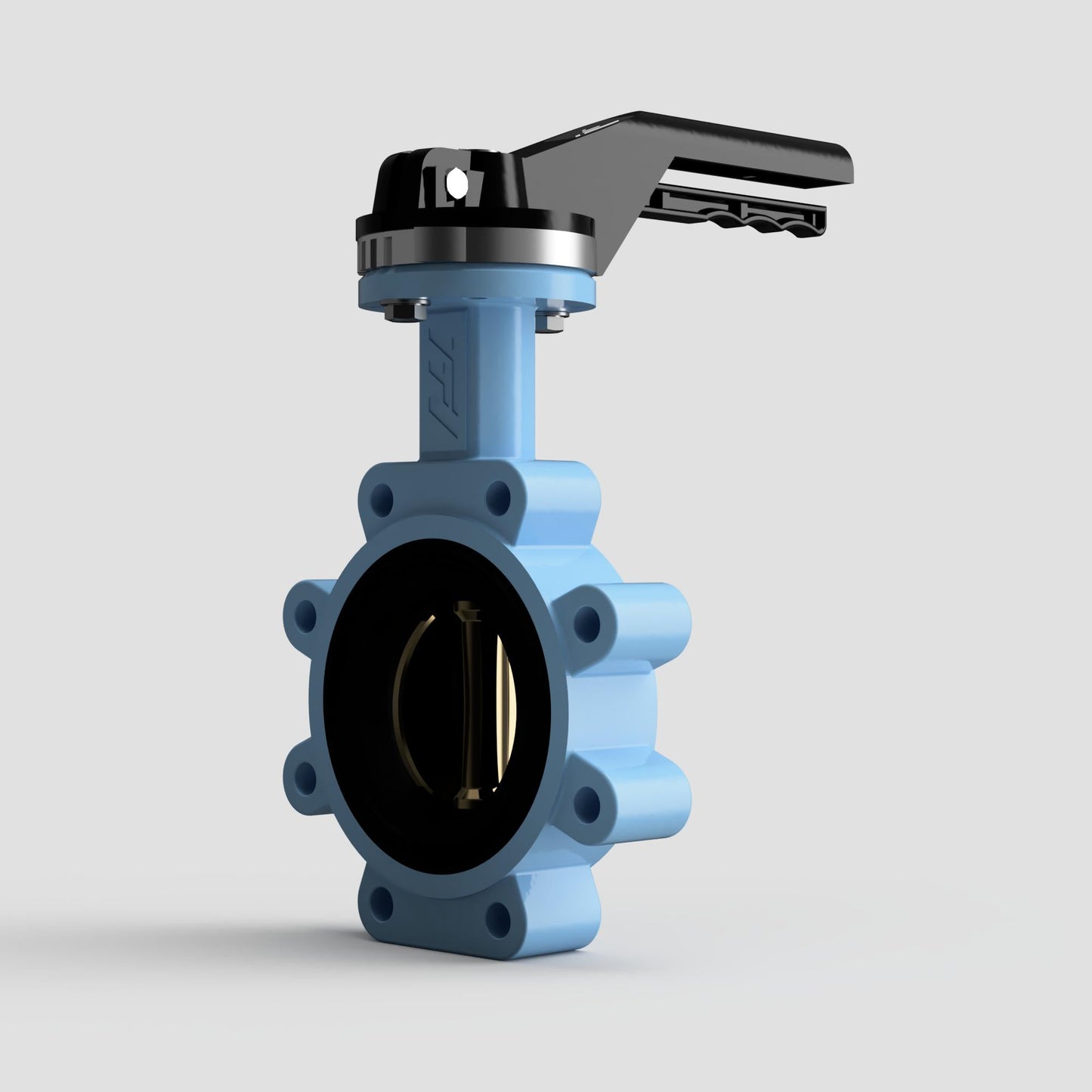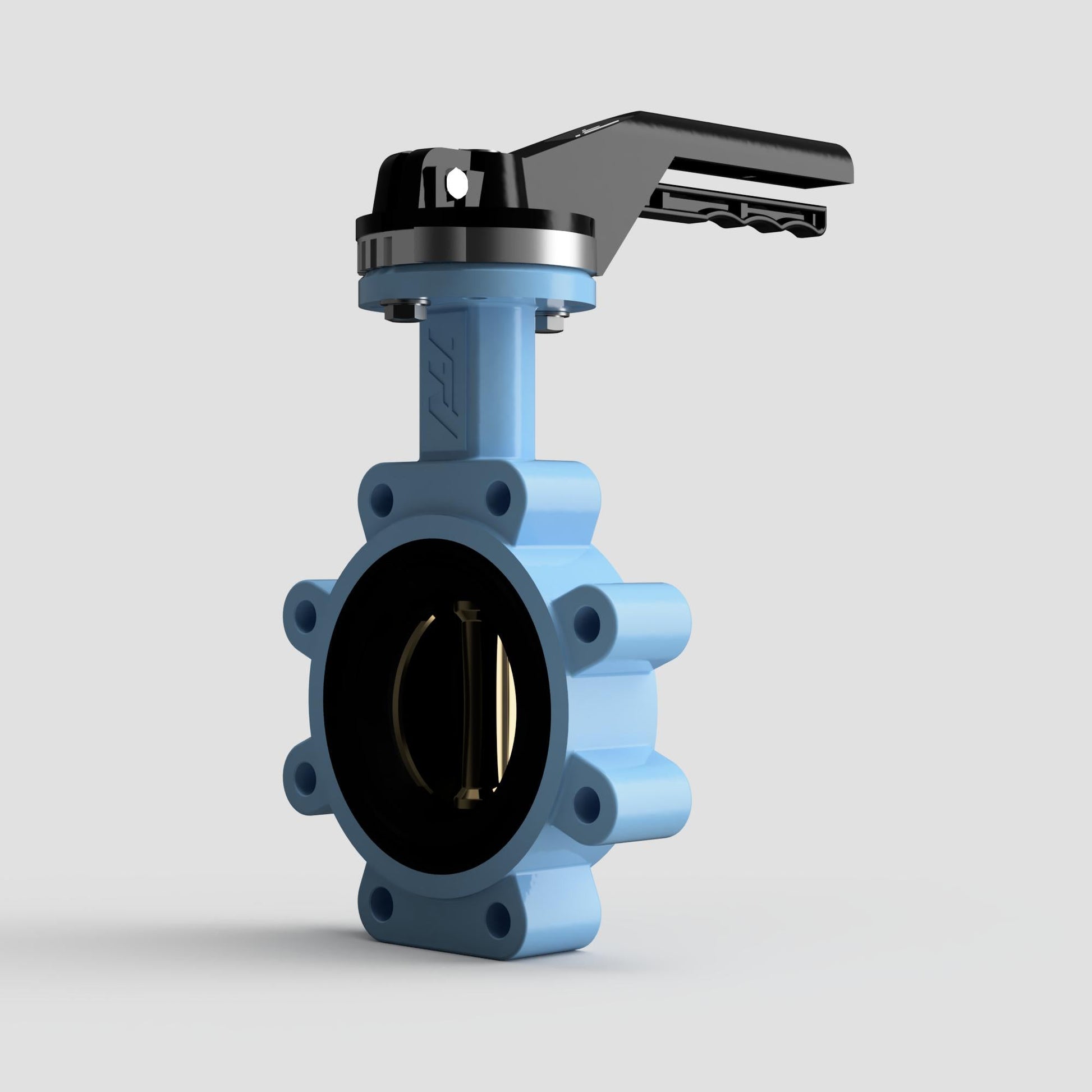Wras Valves
TTV Ductile Iron Lugged Aluminium Bronze Disc TTV Butterfly Valves
TTV Ductile Iron Lugged Aluminium Bronze Disc TTV Butterfly Valves
Couldn't load pickup availability
⚠️ Now Fully WRAS Approved – Valve & EPDM Seat
TTV Ductile Iron Lugged Butterfly Valves with Aluminium Bronze Disc & EPDM Seat
The TTV Ductile Iron Lugged Butterfly Valves with Aluminium Bronze Disc are now fully WRAS approved, meaning both the EPDM seat and the entire valve assembly are certified for use with potable water. Built for strength and durability, these valves feature a rugged ductile iron body and a corrosion-resistant aluminium bronze disc, making them ideal for water treatment, industrial systems, and marine applications.
The lugged design ensures secure bolting and enables end-of-line service, while the bubble-tight EPDM seal and low torque operation deliver smooth and reliable performance. With an ISO 5211 mounting pad, these valves are also fully compatible with electric and pneumatic actuators for automated control.
Key Features:
- WRAS Approved Valve & EPDM Seat – Fully certified for potable water use
- Ductile Iron Body – Tough and dependable in demanding applications
- Aluminium Bronze Disc – Superior corrosion resistance and durability
- Lugged Design – Allows for dead-end service and secure flange mounting
- ISO 5211 Mounting Pad – Ready for actuator integration
- Tight Shut-Off – EPDM seat ensures leak-free performance
- Low Torque Requirement – Smooth manual or automated operation
- Serviceable Design – Replaceable seat and disc for easy maintenance
A fully WRAS-certified valve that delivers robust performance, corrosion resistance, and long-term reliability for potable water and industrial systems alike.
Share

FAQ's
What is the difference between a valve and an actuator?
What types of actuators are available?
The main types of actuators are:
Pneumatic actuators – use compressed air for fast, reliable operation.
Electric actuators – use electrical power for precise control.
Hydraulic actuators – use fluid pressure for high-torque applications.
Each type offers unique advantages depending on the environment, media, and system control needs.
How do I choose the right actuator for my valve?
To select the correct actuator, consider:
Valve type and torque requirement
Power source available (air, electric, or hydraulic)
Operating environment (temperature, humidity, hazardous area)
Control signal type (on/off or modulating)
Matching actuator torque and compatibility with the valve’s ISO mounting ensures reliable performance.
What are the main types of valves used in automation?
The most common valves in automated systems include:
Ball valves – for tight shutoff and quick operation.
Butterfly valves – for larger flow control with compact design.
Globe valves – for precise throttling and flow regulation.
Check valves – to prevent backflow.
Gate valves – for full bore flow isolation.
What’s the difference between a double-acting and spring-return actuator?
Double-acting actuators use air (or power) to both open and close the valve.
Spring-return actuators use air to open (or close) the valve, and a built-in spring to automatically return it to a safe position when power or air is lost — ideal for fail-safe operation.
How often should valves and actuators be serviced?
Regular maintenance intervals depend on operating conditions, but a good rule of thumb is to inspect every 6–12 months.
This includes checking for leaks, lubrication, seal wear, and actuator responsiveness to prevent unexpected downtime.

